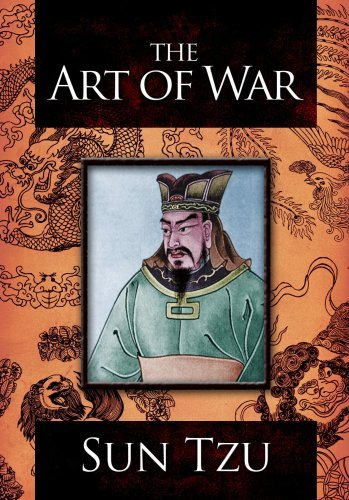Marketers of all sizes are waging pitched battles trying to understand the ROI of their campaigns. Winning this war requires simplicity to carry the day.
Ask any marketer how well their attribution tracking is working and you are likely to get a description of an epic battle where teams are valiantly trying to make sense out of fragmented platforms, data flows and CRM systems.
The herculean battles are universally fought across the marketing world that usually result in wasted effort, wasted budgets and a lot of frustration. This chart below outlines just some of the battles being waged.

Many of these issues overlap making attribution modeling an epic casualty caught in the great collision between marketing automation platforms, Google Analytics, CRM systems and media buying platforms.
The battlefield’s terrain
The terrain of the attribution wars lies in the Internet battleground that evolved to be a content serving engine. It was never meant to “serve up” real people. Yet, the thinking goes, since it is people who buy products and services, we must track people. This POV is promulgated by virtually of all of AdTech who sell people data, track people data or measure people data.
This misdirection leads to much of the heartache making the attribution wars a war of attrition that wears out marketers leaving them underinformed, misinformed or information starved.
Marketers’ battlefield scars
Today’s attribution models are flawed in nature because of their reliance on hard to define “human behaviors” interpreted by digital machines. This sets up a cascading systemic failure that is exacerbated by industry shifts such as user privacy concerns or the cookie crumbling within the next 12 months.
Let’s look at the well touted and prevailing attribution models that all rely on interpreting people’s behaviors (with all its inherent flaws):
- First touch attribution assigns all credit for conversion to the marketing effort that first brings a customer in.
- Last touch attribution is the opposite of first touch attribution and gives all conversion credit to the final touchpoint that leads to a sale.
- Linear attribution is a multi-source attribution model that assigns equal weight to all touchpoints that converted a prospect.
- Position based attribution, sometimes called “U-shaped attribution,” is where the first and last touchpoints gets 40% of the credit for conversion The remaining 20% of credit is split between other touchpoints.
- Time Decay Attribution assigns the greatest credit to the touches that occur closest to conversion but allows for credit to be given to other marketing touchpoints.
- W-Shaped Attribution recognizes three main touchpoints; a first touch; middle touch (like an eBook download) and last touch conversion.
Strategy pivot toward an attribution best practices roadmap.
I could go and on about the pros/ cons of each approach described above. Some are easy to execute but lacking is realistic data to inform actions. Others are more nuanced but require data integration that is just not easily achieved even with a team of data engineers.
Consultants, soldiers in the attribution wars, create complex graphs, charts and methodologies to conquer and dominate the attribution landscape but their tactical advantage is often overwhelmed with data that is hard to untangle.
The way to win the attribution war.
The only way to win the attribution wars is a radical change of strategy and tactics with a new battle plan for success.
This requires bravery to throw out the standard attribution models.
They are complex to manage and are even more complex to decipher, as difficult as cracking the code of the enemy and often failing.
The strategy that can win is a mind shift where marketers to work with and not against, Internet’s DNA as the content serving engine.
Instead of trying to track people in attribution models, launch multi-channel topic-centric campaigns for an integrated approach to attribution. With topics, you can link blog posts with SEM and digital media with ROI at a campaign level to determine which campagins deliver better quality leads.
“Wait,” you say, “that’s not how any of this works – after all we need to track people!”
This line of thinking has been espoused AdTech ventures who trade in tracking people and selling data like arms dealer who are only interested in selling more bullets.
Courage in ditching the old attribution models in favor of a topic-centric model comes from looking at the most successful ad platform on the planet – PPC.
Think about it. PPC relies on topic-centric attribution expressed as keywords. In Google Analytics, you measure overall topic campaigns but not specific people.
Google PPC should give marketers the resilience to recognize there is a lot of wasted energy trying to integrate CRM that tracks people and with marketing ROI. In PPC, it is less important to know that a specific person responded to a specific touchpoint but far more useful to know which topic-centric campaigns generated best quality of inbounds.
The simplicity is what makes this strategy shift practical and sustainable.
The tactical adaptations.
The simplicity of a topic-centric attribution system solves the complex and flawed desire to track the “customer journey to conversion” with all the ambiguity inherent in human behavior. This can be replaced with a lightning fast and efficient model to track the “topic journey to conversion.”
Once you adopt a new strategy, it’s clear some tactics need to change too.
1) Plan in advance the number of touches required to convert.
This mundane yet often overlooked step is vital to understand the budget needed to achieve specific conversion goals. There is no one size fits all model here but trying to understand how many touches a person needs to convert is very hard. Again, like PPC, the metric is which topics are needed to increase overall conversion. No detailed people tracking data required.
2) Do not fall into the channel specific attribution trap.
This trips up a lot of marketers because it is tempting to add more money to a channel that seems to be working. Many a marketer have sacrificed budget dollars on the ROI battlefield where a marketer adds 40% more to the budget expecting a proportionate increase in ROI only to be sorely disappointed when they don’t come close to a 40% increase in returns. The gap between channel data and people data is too far. By focusing on tracking multi-touch, topic campaigns, marketers have the flexibility to track conversions and tactics within a more holistic plan for success.
3) Reintegrate SEO and PCC via a topic lens.
This tactic is probably one of the most useful and overlooked opportunities in attribution. Today, typically, SEO operates as a tech function and PPC is a marketing function of fairly low strategic value. This is an unfortunate and unforced error by marketers that sub-optimizes both. With a clear content-centric framework – PPC and SEO can be coordinated and optimized. The key metrics is to see whether organic traffic (not direct) has an upward trend once these functions are truly integrated via a topic calendar. The win is easily discernable and quickly porfitable.
The attribution wars usually mean marketer capitulation. It doesn’t have to be that way if we change the battle plan where marketers measure the topic journey to conversion instead of customer journey to conversion. This straightforward approach links disparate touchpoints based on topics and tracking those campaigns through to the CRM where conversion data lives.
Sun Tzu’s in the 5th century B.C.E. wrote in The Art of War; “The expert in battle seeks his victory from strategic advantage and does not demand it from his men.”
Attribution complexity shouldn’t be confused with efficiency. Simplicity is the ultimate weapon that can help marketers win the attribution wars.





